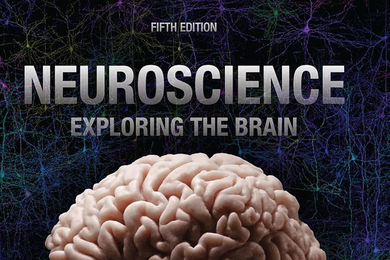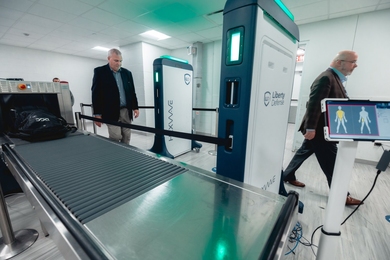MIT’s connections to China, already well-established, are set to be strengthened and expanded as part of a major, long-term effort that is underway. Within the last year, MIT has formalized working relationships with multiple research universities in Greater China, created a new faculty position to study China, and received new funding for grants enabling many more MIT students to study in China.
These measures are all intended to produce greater exchange in terms of research and innovation at a time when China’s economy and education infrastructure are growing rapidly. Earlier this year, China surpassed Japan as the world’s second-largest economy, behind the United States; the number of scientific researchers in China has increased by 77 percent in the last decade.
To address MIT’s continued engagement with China, the Institute’s MIT–Greater China Strategy Working Group, established in 2008 and chaired by Victor Zue, the Delta Electronics Professor of Electrical Engineering and Computer Science and director of MIT’s Computer Science and Artificial Intelligence Laboratory, released a report in September 2010 that recommended several initiatives designed to promote intellectual and technological exchange. “If we are going to be involved in the resolution of global problems — whether sustainable cities, climate change, resource depletion, disease control or any other — we have to be able to understand and engage partners in China,” states the report.
Research relationships and intellectual infrastructure
One way MIT is building connections with Greater China — including Taiwan and Hong Kong — is by increasing its formal relationships with Chinese research universities. In June 2010, MIT President Susan Hockfield signed an agreement establishing a Center for Theoretical Computer Science involving MIT, Tsinghua University in Beijing, and the Chinese University of Hong Kong; planned programs include joint research and student exchanges. President Hockfield also signed an agreement with Shanghai Jiao Tong University to develop a seven-day executive-education course in energy, to be offered multiple times per year in conjunction with the MIT Energy Initiative. In 2009, MIT entered into a collaboration with Tsinghua University and the University of Cambridge involving low-carbon energy research, in areas including carbon sequestration, nuclear power, heat management and building efficiency.
Those agreements add to existing programs such as the MIT-China Management Education Project, created in 1996, in which the MIT Sloan School of Management works with faculty at Tsinghua University, Fudan University in Shanghai, and Lingnan College of Zhongshan University in Guangzhou to develop courses; the program lets MIT both host Chinese professors and send MIT Sloan faculty and students to China for teaching and consultation. The project also led to the formation of MIT Sloan’s China Lab in 2008, which lets MIT Sloan students hold internships with entrepreneurial firms in China.
A major part of the Institute’s effort will also be the expansion of the study of China at MIT. A new chair in the School of Humanities, Arts, and Social Sciences, The Quanta Professorship in Chinese Culture, has recently been established thanks to a $5 million donation. In 2008, the Institute also launched its MIT China Forum, which brings Chinese scholars, industrialists and government officials to campus on a regular basis. The faculty working group’s report on China also recommended that MIT organize regular conferences in China, to add visibility to MIT’s research efforts and engage its alumni in the region.
The $5 million in funding for the Quanta Professorship is part of $11.5 million in funding for the MIT–Greater China Initiative that the Institute has so far received. That includes a $1 million, five-year grant allowing MIT undergraduates, starting in the 2010-11 academic year, to undertake internships and language studies in China.
Expanding MIT’s infrastructure
Today, more foreign-born MIT undergraduates and graduate students are from China than from any other country. But intellectual exchange between China and MIT is a long-established tradition. In the 1930s, the famed MIT mathematician Norbert Wiener spent a year at Tsinghua University in Beijing, working with electrical engineer Yuk Wing Lee ’27, SM ’28, ScD ’30 on problems in electronic networks, a research effort that aided Wiener’s work on cybernetics. The rocket scientist Qian Xuesen SM ’36 helped found NASA’s Jet Propulsion Laboratory as well as China’s space program, while the physicist Xie Xide PhD ’51 became the first woman to head a major Chinese university.
The study of China within MIT also has deep roots. Lucian Pye, the noted political scientist who emphasized the significance of distinctive national political cultures, helped found MIT’s Department of Political Science after arriving at the Institute in 1956. Still, MIT leaders recognize the need to expand the Institute’s intellectual activities pertaining to China.
“Interest in China is increasing almost exponentially at MIT, and to prepare our students to take full advantage of the opportunities China presents will require first and foremost strengthening the academic infrastructure on campus and, in particular, MIT’s Chinese language offerings and classes in the culture, history, politics and economics of China,” says Associate Provost Philip S. Khoury, the Ford International Professor of History.
MIT will also increase the study of China among campus researchers through a program of seed grants being funded in correspondence with the MIT-Greater China Initiative. A new series of awards has just been announced by MIT’s Center for International Studies.
MIT is aiming to increase the number of students it send to China, Hong Kong and Taiwan every year through the MIT International Science and Technology Initiatives (MISTI), which places students into internships and research positions globally. The MIT-China Initiative report recommends increasing the potential number of MISTI students in Greater China from 50 to 200 annually, in recognition of the area’s increasing technological and economic importance.
“The MIT-Greater China Initiative, if successful, will create numerous new opportunities in the years ahead for our students to experience first-hand and on location the burgeoning research enterprises in China and to participate in the generation of new knowledge and its dissemination in China, back at MIT, and around the world,” says Khoury.
These measures are all intended to produce greater exchange in terms of research and innovation at a time when China’s economy and education infrastructure are growing rapidly. Earlier this year, China surpassed Japan as the world’s second-largest economy, behind the United States; the number of scientific researchers in China has increased by 77 percent in the last decade.
To address MIT’s continued engagement with China, the Institute’s MIT–Greater China Strategy Working Group, established in 2008 and chaired by Victor Zue, the Delta Electronics Professor of Electrical Engineering and Computer Science and director of MIT’s Computer Science and Artificial Intelligence Laboratory, released a report in September 2010 that recommended several initiatives designed to promote intellectual and technological exchange. “If we are going to be involved in the resolution of global problems — whether sustainable cities, climate change, resource depletion, disease control or any other — we have to be able to understand and engage partners in China,” states the report.
Research relationships and intellectual infrastructure
One way MIT is building connections with Greater China — including Taiwan and Hong Kong — is by increasing its formal relationships with Chinese research universities. In June 2010, MIT President Susan Hockfield signed an agreement establishing a Center for Theoretical Computer Science involving MIT, Tsinghua University in Beijing, and the Chinese University of Hong Kong; planned programs include joint research and student exchanges. President Hockfield also signed an agreement with Shanghai Jiao Tong University to develop a seven-day executive-education course in energy, to be offered multiple times per year in conjunction with the MIT Energy Initiative. In 2009, MIT entered into a collaboration with Tsinghua University and the University of Cambridge involving low-carbon energy research, in areas including carbon sequestration, nuclear power, heat management and building efficiency.
Those agreements add to existing programs such as the MIT-China Management Education Project, created in 1996, in which the MIT Sloan School of Management works with faculty at Tsinghua University, Fudan University in Shanghai, and Lingnan College of Zhongshan University in Guangzhou to develop courses; the program lets MIT both host Chinese professors and send MIT Sloan faculty and students to China for teaching and consultation. The project also led to the formation of MIT Sloan’s China Lab in 2008, which lets MIT Sloan students hold internships with entrepreneurial firms in China.
A major part of the Institute’s effort will also be the expansion of the study of China at MIT. A new chair in the School of Humanities, Arts, and Social Sciences, The Quanta Professorship in Chinese Culture, has recently been established thanks to a $5 million donation. In 2008, the Institute also launched its MIT China Forum, which brings Chinese scholars, industrialists and government officials to campus on a regular basis. The faculty working group’s report on China also recommended that MIT organize regular conferences in China, to add visibility to MIT’s research efforts and engage its alumni in the region.
The $5 million in funding for the Quanta Professorship is part of $11.5 million in funding for the MIT–Greater China Initiative that the Institute has so far received. That includes a $1 million, five-year grant allowing MIT undergraduates, starting in the 2010-11 academic year, to undertake internships and language studies in China.
Expanding MIT’s infrastructure
Today, more foreign-born MIT undergraduates and graduate students are from China than from any other country. But intellectual exchange between China and MIT is a long-established tradition. In the 1930s, the famed MIT mathematician Norbert Wiener spent a year at Tsinghua University in Beijing, working with electrical engineer Yuk Wing Lee ’27, SM ’28, ScD ’30 on problems in electronic networks, a research effort that aided Wiener’s work on cybernetics. The rocket scientist Qian Xuesen SM ’36 helped found NASA’s Jet Propulsion Laboratory as well as China’s space program, while the physicist Xie Xide PhD ’51 became the first woman to head a major Chinese university.
The study of China within MIT also has deep roots. Lucian Pye, the noted political scientist who emphasized the significance of distinctive national political cultures, helped found MIT’s Department of Political Science after arriving at the Institute in 1956. Still, MIT leaders recognize the need to expand the Institute’s intellectual activities pertaining to China.
“Interest in China is increasing almost exponentially at MIT, and to prepare our students to take full advantage of the opportunities China presents will require first and foremost strengthening the academic infrastructure on campus and, in particular, MIT’s Chinese language offerings and classes in the culture, history, politics and economics of China,” says Associate Provost Philip S. Khoury, the Ford International Professor of History.
MIT will also increase the study of China among campus researchers through a program of seed grants being funded in correspondence with the MIT-Greater China Initiative. A new series of awards has just been announced by MIT’s Center for International Studies.
MIT is aiming to increase the number of students it send to China, Hong Kong and Taiwan every year through the MIT International Science and Technology Initiatives (MISTI), which places students into internships and research positions globally. The MIT-China Initiative report recommends increasing the potential number of MISTI students in Greater China from 50 to 200 annually, in recognition of the area’s increasing technological and economic importance.
“The MIT-Greater China Initiative, if successful, will create numerous new opportunities in the years ahead for our students to experience first-hand and on location the burgeoning research enterprises in China and to participate in the generation of new knowledge and its dissemination in China, back at MIT, and around the world,” says Khoury.






